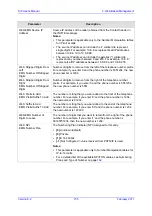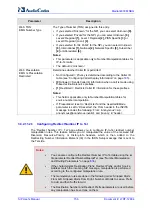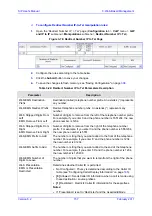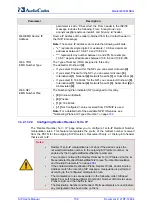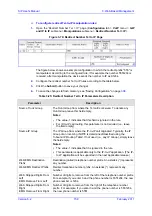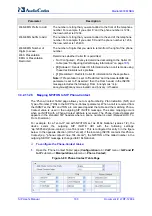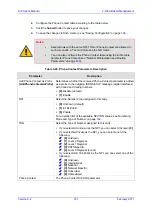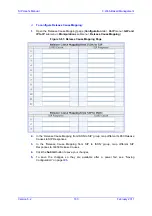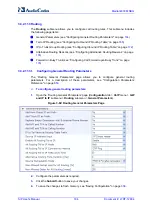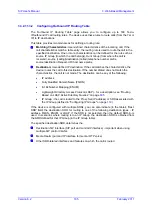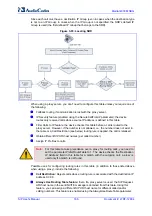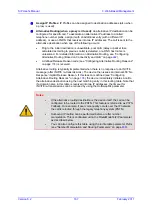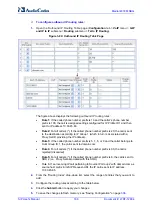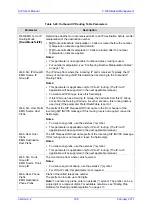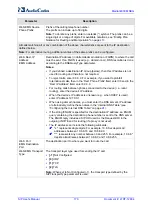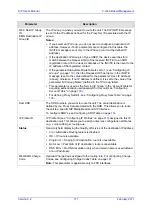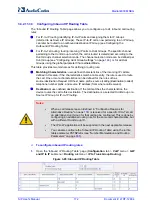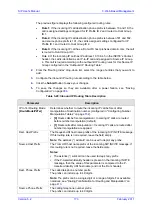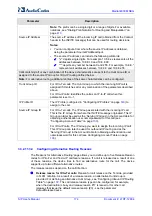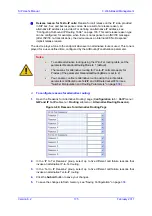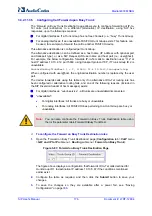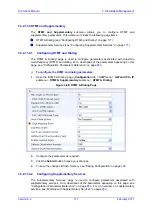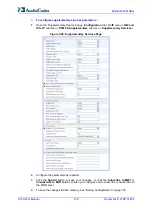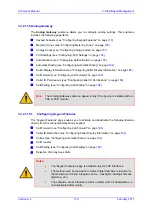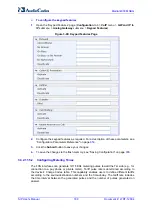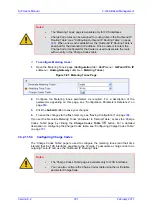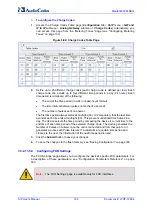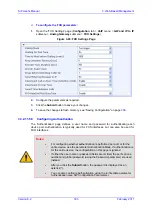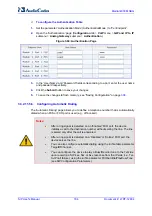
Version 6.2
169
February 2011
SIP User's Manual
3. Web-Based Management
Table
3-28: Outbound IP Routing Table Parameters
Parameter
Description
Web/EMS: Tel to IP
Routing Mode
[RouteModeTel2IP]
Determines whether to route received calls to an IP destination before or after
manipulation of the destination number.
[0]
Route calls before manipulation = Calls are routed before the number
manipulation rules are applied (default).
[1]
Route calls after manipulation = Calls are routed after the number
manipulation rules are applied.
Notes:
This parameter is not applicable if outbound proxy routing is used.
For number manipulation, see ''Configuring Number Manipulation Tables''
on page
Web: Src. IPGroupID
EMS: Source IP
Group ID
The IP Group from where the incoming IP call is received. Typically, the IP
Group of an incoming INVITE is determined according to the ‘Inbound IP
Routing Table’.
Notes:
This parameter is applicable only for IP-to-IP routing. (The IP-to-IP
application will be supported in the next applicable release.)
To denote all IP Groups, leave this field empty.
If this IP Group has a Serving IP Group, then all calls from this IP Group
are sent to the Serving IP Group. In such a scenario, this routing table is
used only if the parameter PreferRouteTable is set to 1.
Web: Src. Host Prefix
EMS: Source Host
Prefix
The prefix of the SIP Request-URI host name in the From header of the
incoming SIP INVITE message. If this routing rule is not required, leave the
field empty.
Notes:
To denote any prefix, use the asterisk (*) symbol.
This parameter is applicable only for IP-to-IP routing. (The IP-to-IP
application will be supported in the next applicable release.)
Web: Dest. Host
Prefix
EMS: Destination
Host Prefix
The SIP Request-URI host name prefix of the incoming SIP INVITE message.
If this routing rule is not required, leave the field empty.
Notes:
To denote any prefix, use the asterisk (*) symbol.
This parameter is applicable only for IP-to-IP routing. (The IP-to-IP
application will be supported in the next applicable release.)
Web: Src. Trunk
Group ID
EMS: Source Trunk
Group ID
The Hunt Group from where call is received.
Notes:
To denote any Hunt Group, use the asterisk (*) symbol.
For IP-to-IP calls, this parameter is not required.
Web: Dest. Phone
Prefix
EMS: Destination
Phone Prefix
Prefix of the called telephone number.
The prefix can include up to 50 digits.
Note:
To denote any prefix, enter an asterisk (*) symbol. The prefix can be a
single digit or a range of digits. For available notations, see ''Dialing Plan
Notation for Routing and Manipulation'' on page
Summary of Contents for Mediant 800 MSBG
Page 2: ......
Page 366: ...SIP User s Manual 366 Document LTRT 12804 Mediant 800 MSBG Reader s Notes ...
Page 372: ...SIP User s Manual 372 Document LTRT 12804 Mediant 800 MSBG Reader s Notes ...
Page 390: ...SIP User s Manual 390 Document LTRT 12804 Mediant 800 MSBG Reader s Notes ...
Page 404: ...SIP User s Manual 404 Document LTRT 12804 Mediant 800 MSBG Reader s Notes ...
Page 616: ...SIP User s Manual 616 Document LTRT 12804 Mediant 800 MSBG Reader s Notes ...
Page 636: ...SIP User s Manual 636 Document LTRT 12804 Mediant 800 MSBG Reader s Notes ...
Page 652: ...SIP User s Manual 652 Document LTRT 12804 Mediant 800 MSBG Reader s Notes ...
Page 886: ...SIP User s Manual 886 Document LTRT 12804 Mediant 800 MSBG Reader s Notes ...

